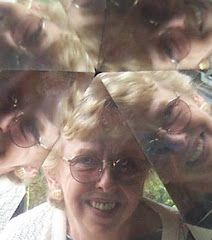One of the best places we discovered while RVing was Mountain View, Arkansas. The opportunities to sightsee, explore a cavern, hike, camp, fish, see live musical performances, and a myriad of other activities abound here. We kept being told that we should go there because of its beauty and old-fashioned hometown feel. Then on our first RV trip there, we heard about the music. Musicians gather around the courthouse square in small groups daily and every evening to sing and play traditional songs with guitars, fiddles, mandolins and various other instruments, saluting the music that has been passed down through generations of their families. This is true American folk music formed from the fabric of hardscrabble lives scratched out in remote Appalachian mountain communities.
After driving the few miles into town a few times to enjoy the music, as well as the Saturday night show on a stage set up in front of the courthouse, we were hooked and I knew I had to write some articles about the town. I interviewed several people and they all told me I should look up a man named Jimmy Driftwood to learn the real history of the place, since he was such an integral part of it all. I called him, and he said “Come on out. We’d love to have you.” That was the start of a warm, close friendship that lasted till the day he died.
His name had sounded familiar to me, and I soon realized that he had played a vital role in the folk renaissance back in the early sixties. Here I had been one of folk music’s biggest fans, but duty and Hawaii called me away to where another type of music predominated. This music involved steel guitars and the hula, and was lovely, but lacked the primal pull of my roots. Still, it was Hawaii’s folk music. And I drifted away from folk music, just as most of America soon did.
Meanwhile, it seems that Jimmy (or Jimmie) Driftwood, the author of more than 6,000 songs based on life in the Ozarks and American history, became somewhat of a folk hero in the early sixties, appearing in Carnegie Hall and at the Newport Folk Festival, as well as being a regular on the Grand Ole Opry. Jimmy had been a history teacher when his wife first encouraged him to write a song to help spark his students’ interest in the history of our country. He penned “The Battle of New Orleans,” and let’s just say that the rest was history. This is probably his most remembered hit on both country and pop charts and won Song of the Year Grammy for both Jimmy Driftwood and Johnny Horton, who recorded it.
In 1959, a half-dozen of his songs were on American pop and country charts. Many of his songs were performed on stage by folk-artists like Joan Baez, Judy Collins, the Weavers, the Kingston Trio, Peter, Paul and Mary, Burl Ives, and Pete Seeger, and included “Unfortunate Man” as well as “Wilderness Road,” which won a Grammy nomination for best folk performance. Other well known songs included “Tennessee Stud,” for which Eddie Arnold won a Grammy nomination in both folk and pop categories, and “North to Alaska.” His music echoed America’s past and wars, and was influenced by stories from his grandfather, who had lived during the Civil War.
While Jimmy was becoming well known, his little home county drifted lazily in its remote valley location, 30 miles from the nearest major highway. After traveling the world with folk groups, Jimmy realized the treasures his own region of the country held, where musicians from almost every family sang and played their kind of music on their front porches in the evening. These were descendants of the people who had migrated from the mountains of Tennessee, North Carolina and Virginia back in the early to mid-19th century, and before that from Ireland, Scotland and England. Jimmy felt this type of music needed to be preserved and that Mountain View would be a perfect showcase of this musical treasure.
Jimmy left the music business to return home, where he gathered a group of fellow musicians from the region to make a trip with him to Washington D.C. to try and generate funds to build a national repository for folk music. Jimmy was already known to influential politicians in D.C. through his conservation work for the beautiful Buffalo River and nearby Blanchard Caverns in the Ozarks, so he lined up local musicians on the steps of the Capitol to sing and play. Many of them had never flown on a plane; some had never even been outside their remote valley. Jimmy exceeded his hometown’s monetary expectations by a couple of million dollars and went home to help establish the Ozark Folk Center, where traditional Ozark heritage could be preserved. In addition to a theater where world-known entertainers perform on occasion, the Ozark Folk Center holds a living museum where traditional crafts are demonstrated, and offers a steady schedule of workshops during spring, summer and fall where students can learn to play musical instruments such as autoharp and dulcimer. There’s also a gift shop featuring locally made pottery and crafts.
Jimmy was also instrumental in starting the Ozark Folk Festival in 1963, which takes place the third weekend in April of each year. The festival typically attracts more than one-hundred thousand visitors, eager to enjoy the music and spring in the Ozarks. The festival still takes place each year, and a fall festival called the Annual Beanfest and Outhouse Races has been added. For this fun-filled festival, locals design and create their own human-powered outhouses to race down a street adjoining the courthouse, and bean-masters from across the country show up to cook huge pots of beans and cornbread to feed the many thousands of tourists that show up during the last weekend of October. Music takes center stage at this festival, too.
The town is still small, with a year-round population of around 2000 or so contented souls, but each spring and fall, every motel and RV Park for miles is stuffed to overflowing. Often RVers have to locate some local landowner who is willing to let them park their RVs in a vacant field for the few days of the festivals. We returned for several years for the fall festival, and even secured a yearly work camping position in one of the RV Parks, thus ensuring a parking place. We once shared our over-sized RV site with another RVer, as did many others, and some years we spent hours on the phone trying to locate sites for RVers who drove into town without reservations.
We even stayed there during a couple of summers, which can get hot and sticky, but nonetheless, beautiful. And every night we would make our way down to the courthouse square or to one of the local theaters to listen to music. I even purchased a mountain dulcimer from McSpadden, widely regarded as the leading maker of dulcimers. Unfortunately, my playing skills don’t anywhere near match the quality of the dulcimer nor the talent of most locals there!
And Jimmy passed away in 1998 at 91 years of age. Every year before then we visited him and his beautiful part Cherokee wife. He would always pull out his guitar and play and sing for us. He continued to perform in his own theater, the Jimmie Driftwood Barn for as long as his health allowed. The last time we saw him at home, he performed a little jig for us on his back porch.
Somehow Mountain View is not the same for us since he has passed, although we’ve returned a few times since. However, he left a legacy that will continue on. The music goes on in the square, as do the festivals. Each year, musicians converge from as far away as New York City (a woman doctor who plays the hammer dulcimer), and from the west coast.
We always go watch our favorite groups play their timeless music when we return there. But we always have to drive by Jimmy’s humble place in Timbo just to remind ourselves that this is where it all started—with the dream of one man who gave up a successful musical career to return to his home in the Ozark mountains to try and save the timeless music. I don’t think he ever stopped writing. And even today I heard "Battle of New Orleans," which reminded me that his music lingers on.
If you want to drive to Mountain View, it's at the crossroads of Highways 5, 9 and 14 in north central Arkansas.


No comments:
Post a Comment